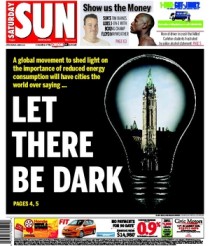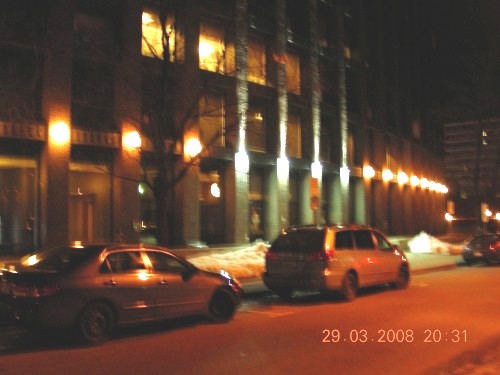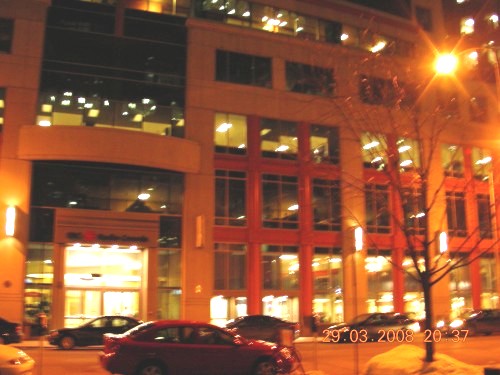Yesterday, Stephane Dion, the embattled leader of the Liberal Party of Canada tried to attack the Prime Minister on a 20 year old position he wrote as a member of the Reform Party.
From CTV:
Using a 20-year-old Reform Party document authored by Stephen Harper, the Liberals tried to paint the prime minister as anti-immigrant Tuesday.
Liberal Leader Stephane Dion quoted the document in the House of Commons, which said immigration should not “radically or suddenly alter the ethnic makeup of Canada.”
“(This) may look like an attempt to deliver promises made by the Reform party 20 years ago,” Dion said, saying the old report was the inspiration for the Conservative’s new immigration bill.
Well, now. Does anyone disagree? Logically, if Dion disagrees with Harper’s position, he would agree with the inverse:
immigration should “radically or suddenly alter the ethnic makeup of Canada.”
If we’re going to dig into the past to find old quotes from MPs, there are a few Liberal ones.
In 1992, Tom Wappel suggested refugees be held in closed military bases. (Toronto Star, November 16, 2002).
“We should just choose the best. The present system is not fair. Fairness means we don’t put the queue jumpers ahead; criminal refugees are deported quickly. We try not to burden our schools with English as a second language.” — Garth Turner (Edmonton Journal, May 19, 1993)
“The fact is our immigration minister has been allowing terrorists and criminals to enter Canada through our porous and faulty immigration laws.” — Keith Martin (Hansard, October 18, 2001)
“On the issue of criminality, individuals who have committed crimes in this country should be sent back to their country of origin.” — Keith Martin (Hansard, February 27th, 2001)
[Denis] Coderre said that immigrants and refugees who would “crachent sur mon drapeau [spit on my flag]” by supporting Quebec separation, should be deported. (National Post, January 16, 2002)
Canada needs to look at its immigration policies, she added. “Do we have people coming in illegally, who are running drugs?” — Hedy Fry (The Province, January 22, 2008)
Toronto MP John McKay, a Martin supporter and chairman of the Ontario caucus, has said he finds it bizarre that ”children and non-citizens” are able to determine who becomes the next prime minister. Mr. McKay attended Saturday’s meeting and voted in favour of the extra restrictions. (National Post, February 11, 2002)
If Dion thinks he’s found a smoking gun in a 20 year old quote by Harper, I’ll call his bet to the same inconsequential degree with some old Liberal quotes.
 Earth Hour was ‘celebrated’ worldwide on Saturday in order to raise “awareness” of climate change and our wasteful consumption of energy. I was made aware of this event by the huge (approx) 50 ft full colour banner hanging from Ottawa city hall, the countless full colour flyers taped to lamp posts downtown, the wall to wall TV network coverage that has been burning up the microwaves, the buckets of black ink used to print clever ‘lights out’ themes on the front pages of newspapers produced from dead trees. Ironically, one Earth Hour promoter suggested sitting in the dark and burning candles instead of having the lights on. Alas, burning wax is a much less efficient method of producing light, and a process that produces more CO2, than using fluorescent (or even incandescent bulbs) that have been produced as a result of industrial progress, and market-based innovation. Indeed, the net result of industrialization was to create more efficient processes for achieving the same or better end results for less energy cost and less energy waste.
Earth Hour was ‘celebrated’ worldwide on Saturday in order to raise “awareness” of climate change and our wasteful consumption of energy. I was made aware of this event by the huge (approx) 50 ft full colour banner hanging from Ottawa city hall, the countless full colour flyers taped to lamp posts downtown, the wall to wall TV network coverage that has been burning up the microwaves, the buckets of black ink used to print clever ‘lights out’ themes on the front pages of newspapers produced from dead trees. Ironically, one Earth Hour promoter suggested sitting in the dark and burning candles instead of having the lights on. Alas, burning wax is a much less efficient method of producing light, and a process that produces more CO2, than using fluorescent (or even incandescent bulbs) that have been produced as a result of industrial progress, and market-based innovation. Indeed, the net result of industrialization was to create more efficient processes for achieving the same or better end results for less energy cost and less energy waste.
